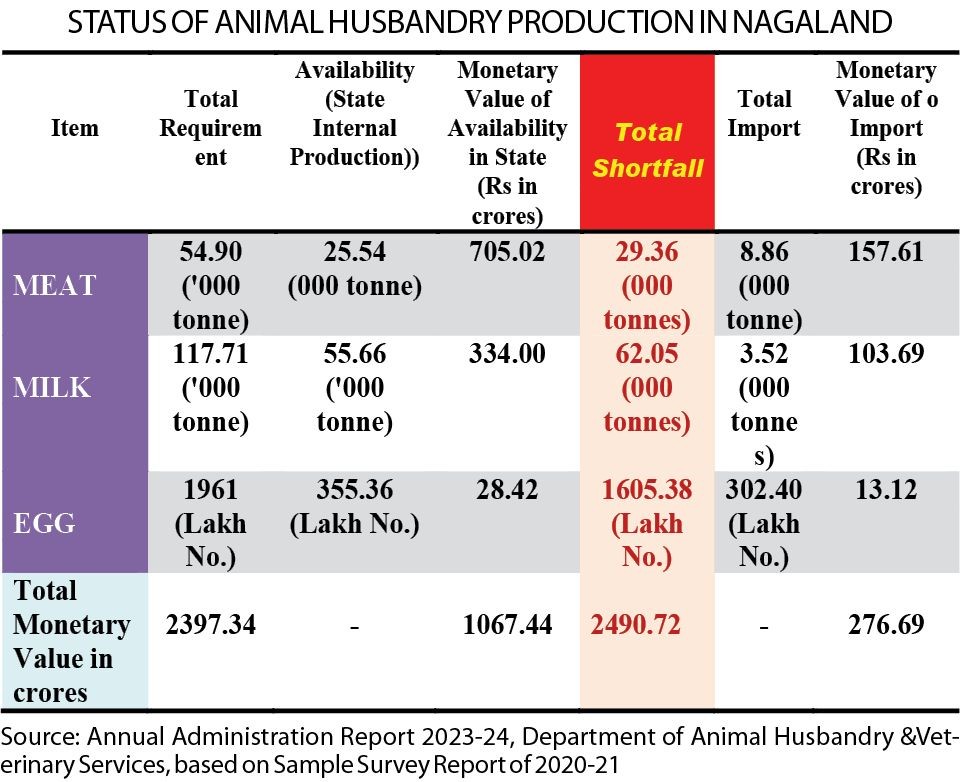
Sector eyes growth amidst import reduction
Our Correspondent
Kohima I March 17
Nagaland State produces just 45.07% of the total requirement of animal husbandry products worth Rs. 1022.61 crore, leaving a shortfall of 54.93%, informed an official report.
This implies a short fall of Rs 2490.72 crore in monetary value. However, the Annual Administration Report 2023-24 of the Department of Animal Husbandry & Veterinary Services, based on the Sample Survey Report of 2020-21 noted a positive sign to this shortfall, saying there is immense potential and scope for animal husbandry development in the State in terms of demand and supply.
Despite the gap that exists today in terms of demand and supply, the import quantum of animal husbandry products is gradually reducing compared with the base level of 2001-02, which in monetary terms stands at Rs 375.00 crore but in 2022-23, the import value is calculated at Rs 276.69 crore, added by the report tabled in the recently concluded 4th session of the 14th Nagaland Legislative Assembly in Kohima.
This declining import quantum suggests that there is a positive correlation between State Domestic Products and the existing human population.
Besides, the report noted that the per capita availability of meat and milk in the state is satisfactory, though lesser than the per capita requirement, since the food habits of Nagas are changing in this modern era. The urban population relies on balanced foods like rice, meat, milk, vegetables, fruits, wheat, and its products, rather than being highly dependent on meat as it was a decade ago.
Meanwhile, the report highlighted that the total requirement of animal husbandry products annually in Nagaland stands at 54.90 ('000 tonne) of meat, 117.71 ('000 tonne) milk, and 1961 lakh eggs for a total monetary value of Rs. 2397.34 crores.
However, out of this, the State produces animal husbandry products worth Rs. 1067.44 crore, leaving a shortfall of Rs. 2490.72 crore.
Despite this gap, the report maintains a positive outlook, looking at the potentiality of filling the deficits through an increase in internal production.






